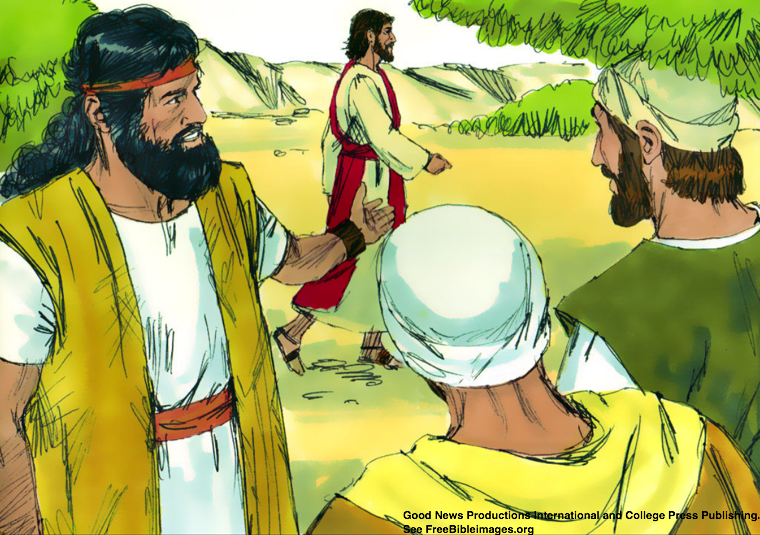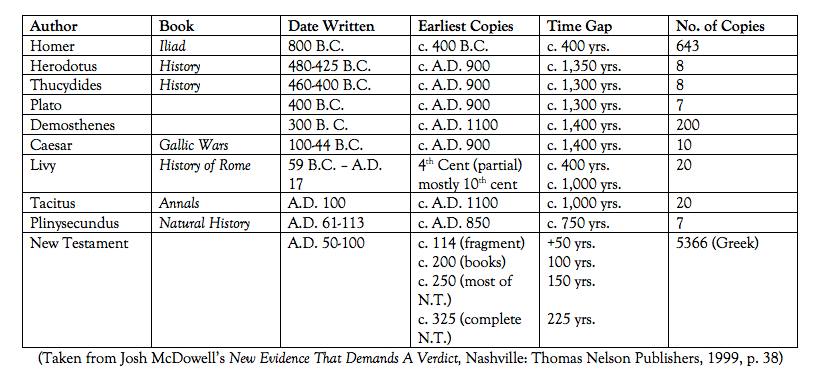By Norman L. Geisler
The Bible cannot err, since it is God’s Word, and God cannot err. This does not mean there are no difficulties in the Bible. But the difficulties are not due to God’s perfect revelation, but to our imperfect understanding of it. The history of Bible criticism reveals that the Bible has no errors, but the critics do. Most problems fall into one of the following categories.
ASSUMING THE UNEXPLAINED IS UNEXPLAINABLE
When a scientist comes upon an anomaly in nature, he does not give up further scientific exploration. Rather, the unexplained motivates further study. Scientists once could not explain meteors, eclipses, tornadoes, hurricanes, and earthquakes. Until recently, scientists did not know how the bumblebee could fly. All of these mysteries have yielded their secrets to relentless patience. Scientists do not now know how life can grow on thermo-vents in the depths of the sea. But no scientist throws in the towel and cries “contradiction!” Likewise, the true biblical scholar approaches the Bible with the same presumption that there are answers to the unexplained. Critics once proposed that Moses could not have written the first five books of the Bible because Moses’ culture was preliterate. Now we know that writing had existed thousands of years before Moses. Also, critics once believed that Bible references to the Hittite people were totally fictional. Such a people by that name had never existed. Now the Hittites’ national library has been found in Turkey. Thus, we have reason to believe that other unexplained phenomena in Scripture will be explained later.
ASSUMING THE BIBLE IS GUILTY OF ERROR UNLESS PROVEN INNOCENT
Many critics assume the Bible is wrong until something proves it right. However, like an American citizen charged with an offense, the Bible should be read with at least the same presumption of accuracy given to other literature that claims to be nonfiction. This is the way we approach all human communications. If we did not, life would not be possible. If we assumed that road signs and traffic signals were not telling the truth, we would probably be dead before we could prove otherwise. If we assumed food packages are mislabeled, we would have to open up all cans and packages before buying. Likewise, the Bible, like any other book, should be presumed to be telling us what the authors said, experienced, and heard. But, negative critics begin with just the opposite presumption. Little wonder they conclude the Bible is riddled with error.
CONFUSING OUR FALLIBLE INTERPRETATIONS WITH GOD’S INFALLIBLE REVELATION
Jesus affirmed that the “Scripture cannot be broken” (John 10:35, NASB). As an infallible book, the Bible is also irrevocable. Jesus declared, “Truly I say to you, until heaven and earth pass away, not the smallest letter or stroke shall pass away from the Law, until all is accomplished” (Matt. 5:18; Luke 16:17, NASB). The Scriptures also have final authority, being the last word on all it discusses. Jesus employed the Bible to resist the tempter (see Matt. 4:4, 7, 10), to settle doctrinal disputes (see Matt. 21:42), and to vindicate his authority (see Mark 11:17). Sometimes a biblical teaching rests on a small historical detail (see Heb. 7:4-10), a word or phrase (see Acts 15:13-17), or the difference between the singular and the plural (see Gal. 3:16). But, while the Bible is infallible, human interpretations are not. Even though God’s Word is perfect (see Ps. 19:7), as long as imperfect human beings exist, there will be misinterpretations of God’s Word and false views about his world. In view of this, one should not be hasty in assuming that a currently dominant assumption in science is the final word. Some of yesterday’s irrefutable laws are considered errors by today’s scientists. So, contradictions between popular opinions in science and widely accepted interpretations of the Bible can be expected. But this falls short of proving there is a real contradiction.
FAILURE TO UNDERSTAND THE CONTEXT
The most common mistake of all Bible interpreters, including some critical scholars, is to read a text outside its proper context. As the adage goes, “A text out of context is a pretext.” One can prove anything from the Bible by this mistaken procedure. The Bible says, “There is no God” (Ps. 14:1, NASB). Of course, the context is: “The fool has said in his heart ‘There is no God.’ ” One may claim that Jesus admonished us not to resist evil (see Matt. 5:39), but the antiretaliatory context in which he cast this statement must not be ignored. Many read Jesus’ statement to “Give to him who asks you,” as though one had an obligation to give a gun to a small child. Failure to note that meaning is determined by context is a chief sin of those who find fault with the Bible.
INTERPRETING THE DIFFICULT BY THE CLEAR
Some passages are hard to understand or appear to contradict some other part of Scripture. James appears to be saying that salvation is by works (see James 2:14-26), whereas Paul teaches that it is by grace. Paul says Christians are “saved through faith; and that not of yourselves. It is a gift of God: Not of works, lest anyone should boast” (Eph. 2:8-9; Rom. 4:5, KJV). But the contexts reveal that Paul is speaking about justification before God (by faith alone), whereas James is referring to justification before others (who only see what we do). And James and Paul both speak of the fruitfulness that always comes in the life of one who loves God.
FORGETTING THE BIBLE’S HUMAN CHARACTERISTICS
With the exception of small sections such as the Ten Commandments, which were “written by the finger of God” (Ex. 31:18, NASB), the Bible was not verbally dictated. The writers were not secretaries of the Holy Spirit. They were human composers employing their own literary styles and idiosyncrasies. These human authors sometimes used human sources for their material (see Josh. 10:13; Acts 17:28; 1 Cor. 15:33; Titus 1:12). In fact, every book of the Bible is the composition of a human writer-about forty of them in all. The Bible also manifests different human literary styles. Writers speak from an observer’s standpoint when they write of the sun rising or setting (see Josh. 1:15). They also reveal human thought patterns, including memory lapses (see 1 Cor. 1:14-16), as well as human emotions (see Gal. 4:14). The Bible discloses specific human interests. Hosea has a rural interest, Luke a medical concern, and James a love of nature. Like Christ, the Bible is completely human, yet without error. Forgetting the humanity of Scripture can lead to falsely impugning its integrity by expecting a level of expression higher than that which is customary to a human document. This will become more obvious as we discuss the next mistakes of the critics.
ASSUMING A PARTIAL REPORT IS A FALSE REPORT
Critics often jump to the conclusion that a partial report is false. However, this is not so. If it were, most of what has ever been said would be false, since seldom does time or space permit an absolutely complete report. For example, Peter’s famous confession in the Gospels:
Matthew: “You are the Christ, the Son of the living God” (16:16, NASB).
Mark: “You are the Christ” (8:29, NASB).
Luke: “The Christ of God” (9:20, NASB).
Even the Ten Commandments, which were “written by the finger of God” (Deut. 9:10), are stated with variations the second time they are recorded (see Ex. 20:8-11 with Deut. 5:12-15). There are many differences between the books of Kings and Chronicles in their description of identical events, yet they harbor no contradiction in the events they narrate.
ASSUMING NEW TESTAMENT CITATIONS OF THE OLD TESTAMENTS MUST BE VERBATIM
Critics often point to variations in the New Testament use of Old Testament Scriptures as a proof of error. They forget that every citation need not be an exact quotation. Sometimes we use indirect and sometimes direct quotations. It was then (and is today) perfectly acceptable literary style to give the essence of a statement without using precisely the same words. The same meaning can be conveyed without using the same verbal expressions.
Variations in the New Testament citations of the Old Testament fall into different categories. Sometimes they are because there is a change of speaker. For example, Zechariah records the Lord as saying, “they will look on me whom they have pierced” (12:10, NASB). When this is cited in the New Testament, John, not God, is speaking. So it is changed to “They shall look on him whom they pierced” (John 19:37, NASB).
At other times, writers cite only part of the Old Testament text. Jesus did this at His home synagogue in Nazareth (see Luke 4:18-19 citing Isa. 61:1-2). In fact, He stopped in the middle of a sentence. Had He gone any farther, He could not have made His central point from the text, “Today this Scripture is fulfilled in your hearing” (vs. 21). The very next phrase, “And the day of vengeance of our God,” (see Isa. 61:1-2) refers to His second coming.
Sometimes the New Testament paraphrases or summarizes the Old Testament text (see Matt. 2:6). Others blend two texts into one (see Matt. 27:9-10). Occasionally a general truth is mentioned, without citing a specific text. For example, Matthew said Jesus moved to Nazareth “that it might be fulfilled which was spoken by the prophets, He shall be called a Nazarene” (Matt. 2:23, KJV). Notice, Matthew quotes no given prophet, but rather “prophet” in general. Several texts speak of the Messiah’s lowliness. To be from Nazareth, a Nazarene, was a byword for low status in the Israel of Jesus’ day.
ASSUMING DIVERGENT ACCOUNTS ARE FALSE
Because two or more accounts of the same event differ, does not mean they are mutually exclusive. Matthew 28:5 says there was one angel at the tomb after the resurrection; whereas John informs us there were two (see 20:12). But these are not contradictory reports. An infallible mathematical rule easily explains this problem: Where there are two, there is always one. Matthew did not say there was only one angel. There may also have been one angel at the tomb at one point on this confusing morning and two at another. One has to add the word “only” to Matthew’s account to make it contradict John’s. But if the critic comes to the texts to show they err, then the error is not in the Bible, but in the critic.
Likewise, Matthew (see 27:5) informs us that Judas hanged himself. But Luke says that “he burst open in the middle and all his intestines gushed out” (Acts 1:18, NASB). Once more, these accounts are not mutually exclusive. If Judas hanged himself from a tree over the edge of a cliff or gully in this rocky area, and his body fell on sharp rocks below, then his entrails would gush out just as Luke vividly describes.
PRESUMING THAT THE BIBLE APPROVES OF ALL IT RECORDS
It is a mistake to assume that everything contained in the Bible is commended by the Bible. The whole Bible is true (see John 17:17), but it records some lies, for example, Satan’s (see Gen. 3:4; John 8:44) and Rahab’s (see Josh. 2:4). Inspiration encompasses the Bible fully in the sense that it records accurately and truthfully even the lies and errors of sinful beings. The truth of Scripture is found in what the Bible reveals, not in everything it records. Unless this distinction is held, it may be incorrectly concluded that the Bible teaches immorality because it narrates David’s sin (see 2 Sam. 11:4), that it promotes polygamy because it records Solomon’s (see 1 Kings 11:3), or that it affirms atheism because it quotes the fool as saying “there is no God” (Ps. 14:1, NASB).
FORGETTING THAT THE BIBLE IS NONTECHNICAL
To be true, something does not have to use scholarly, technical, or so-called “scientific” language. The Bible is written for the common person of every generation, and it therefore uses common, everyday language. The use of observational, nonscientific language is not unscientific, it is merely prescientific. The Scriptures were written in ancient times by ancient standards, and it would be anachronistic to superimpose modern scientific standards upon them. However, it is no more unscientific to speak of the sun standing still (see Josh. 10:12) than to refer to the sun “rising” (see Josh. 1:16). Meteorologists still refer to the times of “sunrise” and “sunset.”
ASSUMING ROUND NUMBERS ARE FALSE
Like ordinary speech, the Bible uses round numbers (see Josh. 3:4; 4:13). It refers to the diameter as being about one-third of the circumference of something (see 1 Chron. 19:18; 21:5). While this technically is only an approximation (see Lindsell, 165-66); it may be imprecise from the standpoint of a technological society to speak of 3.14159265 as “3,” but it is not incorrect. It is sufficient for a “cast metal sea” (see 2 Chron. 4:2) in an ancient Hebrew temple, even though it would not suffice for a computer in a modern rocket. One should not expect to see actors referring to a wristwatch in a Shakespearean play, nor people in a prescientific age to use precise numbers.
NEGLECTING TO NOTE LITERARY DEVICES
Human language is not limited to one mode of expression. So, there is no reason to suppose that only one literary genre was used in a divinely inspired Book. The Bible reveals a number of literary devices. Whole books are written as poetry (e.g., Job, Psalms, Proverbs). The Synoptic Gospels feature parables. In Galatians 4, Paul utilizes an allegory. The New Testament abounds with metaphors (see 2 Cor. 3:2-3; James 3:6), similes (see Matt. 20:1; James 1:6), hyperbole (see John 21:25; 2 Cor. 3:2; Col. 1:23), and even poetic figures (see Job 41:1). Jesus employed satire (see Matt. 19:24; 23:24). Figures of speech are common throughout the Bible.
It is not a mistake for a biblical writer to use a figure of speech, but it is a mistake for a reader to take a figure of speech literally. Obviously when the Bible speaks of the believer resting under the shadow of God’s “wings” (see Ps. 36:7) it does not mean that God is a feathered bird. When the Bible says God “awakes” (see Ps. 44:23), as though he were sleeping, it means God is roused to action.
FORGETTING THAT ONLY THE ORIGINAL TEXT IS INERRANT
Genuine mistakes have been found-in copies of Bible text made hundreds of years after the autographs. God only uttered the original text of Scripture, not the copies. Therefore, only the original text is without error. Inspiration does not guarantee that every copy is without error, especially in copies made from copies made from copies made from copies. For example, the King James Version (KJV) of 2 Kings 8:26 gives the age of King Ahaziah as 22, whereas 2 Chronicles 22:2 says 42. The later number cannot be correct, or he would have been older than his father. This is obviously a copyist error, but it does not alter the inerrancy of the original.
First, these are errors in the copies, not the originals. Second, they are minor errors (often in names or numbers) which do not affect any teaching. Third, these copyist errors are relatively few in number. Fourth, usually by the context, or by another Scripture, we know which is in error. For example, Ahaziah must have been 22. Finally, though there is a copyist error, the entire message comes through. For example, if you received a letter with the following statement, would you assume you could collect some money?
“#OU HAVE WON $20 MILLION.”
Even though there is a mistake in the first word, the entire message comes through-you are 20 million dollars richer! And if you received another letter the next day that read like this, you would be even more sure:
“Y#U HAVE WON $20 MILLION.”
The more mistakes of this kind there are (each in a different place), the more sure you are of the original message. This is why scribal mistakes in the biblical manuscripts do not affect the basic message of the Bible.
CONFUSING GENERAL WITH UNIVERSAL STATEMENTS
Like other literature, the Bible often uses generalizations. The book of Proverbs has many of these. Proverbial sayings, by their very nature, offer general guidance, not universal assurance. They are rules for life, but rules that admit of exceptions. Proverbs 16:7, HCSB affirms that “when a man’s ways please the Lord, He makes even his enemies to be at peace with him.” This obviously was not intended to be a universal truth. Paul was pleasing to the Lord and his enemies stoned him (Acts 14:19). Jesus was pleasing the Lord, and his enemies crucified him. Nonetheless, it is a general truth that one who acts in a way pleasing to God can minimize his enemies’ antagonism.
Proverbs are wisdom (general guides), not law (universally binding imperatives). When the Bible declares “You shall be holy, for I am holy” (Lev. 11:45, NASB), then there are no exceptions. Holiness, goodness, love, truth, and justice are rooted in the very nature of an unchanging God. But wisdom literature applies God’s universal truths to life’s changing circumstances. The results will not always be the same. Nonetheless, they are helpful guides.
FORGETTING THAT LATER REVELATION SUPERSEDES EARLIER ONES
Sometimes critics do not recognize progressive revelation. God does not reveal everything at once, nor does he lay down the same conditions for every period of history. Some of his later revelations will supersede his earlier statements. Bible critics sometimes confuse a change in revelation with a mistake. That a parent allows a very small child to eat with his fingers but demands that an older child use a fork and spoon, is not a contradiction. This is progressive revelation, with each command suited to the circumstance.
There was a time when God tested the human race by forbidding them to eat of a specific tree in the Garden of Eden (see Gen. 2:16-17). This command is no longer in effect, but the later revelation does not contradict this former revelation. Also, there was a period (under the Mosaic law) when God commanded that animals be sacrificed for people’s sin. However, since Christ offered the perfect sacrifice for sin (see Heb. 10:11-14), this Old Testament command is no longer in effect. There is no contradiction between the later and the former commands.
Of course, God cannot change commands that have to do with his unchangeable nature (see Mal. 3:6; Heb. 6:18). For example, since God is love (see 1 John 4:16), he cannot command that we hate him. Nor can he command what is logically impossible, for example, to both offer and not offer a sacrifice for sin at the same time and in the same sense. But these moral and logical limits notwithstanding, God can and has given noncontradictory, progressive revelations which, if taken out of its proper context and juxtaposed, can look contradictory. This is as much a mistake as to assume a parent is self-contradictory for allowing a 16-year-old to stay up later at night than a 6-year-old.
In summation, the Bible cannot err, but critics can and have. There is no error in God’s revelation, but there are errors in our understanding of it. Hence, when approaching Bible difficulties, the wisdom of St. Augustine is best: “If we are perplexed by any apparent contradiction in Scripture, it is not allowable to say, The author of this book is mistaken; but either [1] the manuscript is faulty, or [2] the translation is wrong, or [3] you have not understood.” (Augustine, City of God 11.5)
Sources:
G. L. Archer, Jr., An Encyclopedia of Biblical Difficulties
W. Arndt, Bible Difficulties
—, Does the Bible Contradict Itself?
Augustine, City of God.
Augustine, Reply to Faustus the Manichaean, in P. Schaff, ed., A Select Library of the Nicene and Ante-Nicene Fathers of the Christian Church
N. L. Geisler, “The Concept of Truth in the Inerrancy Debate,” ., October-December 1980
—and T. Howe, When Critics Ask
—and W. E. Nix, General Introduction to the Bible
J. W. Haley, Alleged Discrepancies of the Bible
H. Lindsell, The Battle for the Bible
J. Orr, The Problems of the Old Testament Considered with Reference to Recent Criticism
J. R. Rice, Our God-Breathed Book-The Bible
E. Thiele, The Mysterious Numbers of the Kings of Israel
R. Tuck, ed., A Handbook of Biblical Difficulties
R. D. Wilson, A Scientific Investigation of the Old Testament









